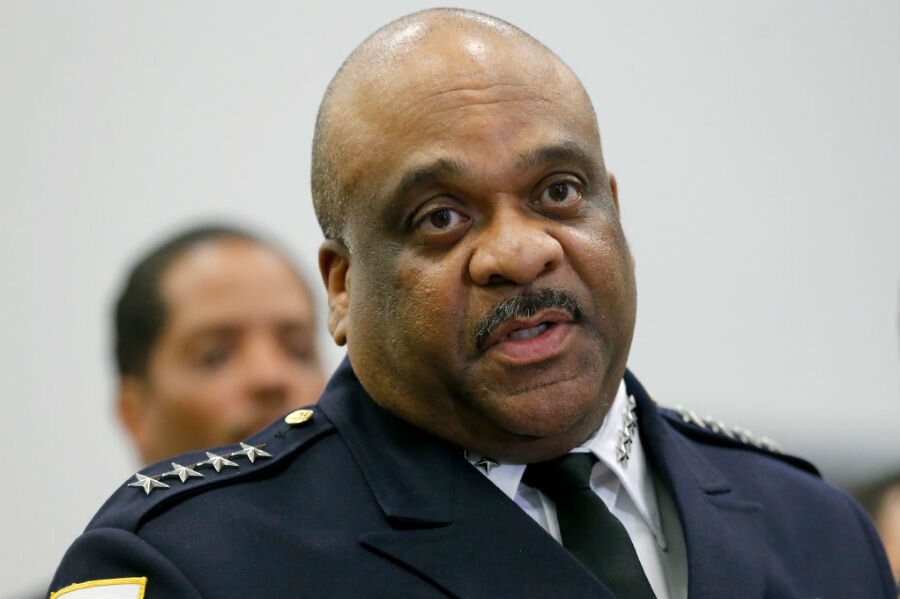How could federal assistance lower Chicago’s homicide rate?
Loading...
According to crime statistics released by the Chicago Police Department on Sunday, 2016 saw a massive spike in gun violence across America's third-largest city. Chicago saw 762 murders last year, the highest number in 20 years.
The spike in murders has been linked with increased gun violence in the city. There were 4,331 victims of shooting incidents in 2016, up from 3,500 the previous year.
In recent months, Chicago has emerged as an epicenter in the debate about urban violence in the United States, especially as it relates to gun control. In light of the divisive political atmosphere over the causes and best ways to address the violence in Chicago, many local and national criminologists, politicians, and community leaders have weighed in on the issue.
Statistics show that most gun-related incidents in Chicago during 2016 occurred as a result of gang-related violence on the city's South and West sides, in only five of Chicago's 22 police districts. The areas predominately affected are poor and largely populated by African-Americans.
During a news conference Sunday, Chicago Police Superintendent Eddie Johnson noted that the increase in homicides came after the city was forced to release the video of the fatal police shooting of Laquan McDonald, an African-American teenager, in November 2015, which Johnson linked to "emboldened" criminal behavior in areas of heightened racial tensions, since increased public scrutiny may leave some police reluctant to take effective action against African-American criminals.
David Carter, a professor of criminal justice at Michigan State University in East Lansing, tells The Christian Science Monitor in an email that while these racial considerations may be a factor to consider, the full picture of violence in Chicago is far more complex.
"The Chicago homicides are a product of many factors including gang violence and drug trafficking – while some have expressed that police have not been proactive due to the 'Ferguson effect,' there is simply insufficient evidence to know whether that's true," says Dr. Carter. "I am not discounting it, we just don't know if it exists and its effect if it does exist."
In addition to racial tensions, Johnson blamed lax Illinois gun laws for failing to dissuade gang members from purchasing firearms.
President-elect Donald Trump tweeted his thoughts on the matter on Monday, suggesting "If Mayor [Emanuel] can't do it he must ask for Federal help!"
A statement after the tweet released by Adam Collins, deputy press secretary for the Chicago mayor, pointed out that Mr. Trump and Mr. Emanuel had already met in order to discuss the issue of the federal role in public safety in the city. The statement did not directly address the president-elect's twitter comment, but did say that Emanuel would be willing to work with the Trump administration on the issue of public safety.
"We agree the federal government has a strong role to play in public safety by funding summer jobs and prevention programming for at-risk youth, by holding the criminals who break our gun laws accountable for their crimes, by passing meaningful gun laws, and by building on the partnerships our police have with federal law enforcement," the mayor's statement said, according to the Chicago Tribune. "We are heartened [Trump] is taking this issue seriously and look forward to working with the new administration on these important efforts."
One joint federal effort already in place is the Violence Reduction Network (VRN), a program sponsored by the US Department of Justice to provide a databased approach to curbing violence in cities through cooperation between local and federal law enforcement. While Chicago has seen little improvement from the VRN so far, Carter says that it is likely because implementation of VRN in the city is still in the early stages.
"Since launching the Violence Reduction Network with five cities in 2014, we have witnessed extraordinary activity and unprecedented collaboration throughout the VRN," said Attorney General Loretta Lynch in a Department of Justice statement released in September. "Cooperation is the hallmark of the Violence Reduction Network, and the work we have done together reminds us that we are not helpless – or hopeless – in the face of violence."
Trump's idea of federal support may differ from the VRN, however. On the campaign trail, the president-elect would frequently single out Chicago as an example for the need of "tougher," and often controversial, police tactics.
"I think Chicago needs stop-and-frisk," Trump said in September, according to the Chicago Tribune. "Now, people can criticize me for that or people can say whatever they want.... It can't continue the way it's going."
Trump's support of stop-and-frisk has drawn criticism from many opponents of the practice who cite the disproportionate use of the technique on African-American and Latino minorities, as the Monitor has previously reported.
In addition to programs like the VRN, Mayor Rahm Emanuel announced last year that 1,000 officers would be added to the police department to help deal with gun violence.
While the spike in homicides in Chicago may have been the most dramatic in the past year, the Windy City was not the only large American city to experience an increase in gun violence in 2016. San Antonio and San Jose both saw significant increases in homicides in 2016, according to CBS News. But New York City and Los Angeles saw little significant change, and both have hit historic low numbers of homicides over the past several years.
This article contains material from the Associated Press.








